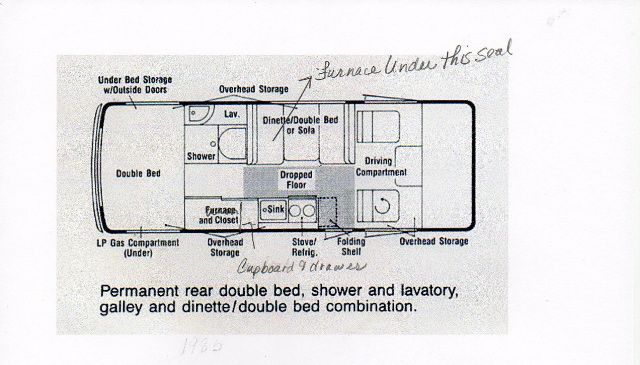I am looking to stretch every gallon of gas as far as I can. Even if it means 1/4 of a mile per gallon better.
I had a 99 F150 4.6L V8 that I put a Spectre air filter in and did a simple intake mod that just used a short piece of PVC pipe and a rubber coupler which allowed for more airflow to enter the intake. I swear that it felt like it had better power. I'm not sure if the larger intake pipe was what helped or the high flow filter, maybe a little of both. It may have also helped the MPG but I really didn't pay a whole lot of attention.
I am wondering if my 360 might benefit from a Spectre or K&N filter. I would probably have to leave the OEM air filter housing since it somewhat helps keep the air being taken in cooler than it would with one of those exposed hamburger bun style housings. So it would solely be an air filter change since there's no real way to do a cold air intake on this van.
I expect the carburetor might need to be adjusted for a higher flow filter since it's not EFI like my F150 was. (I left the truck unhooked from the battery for about 30 mins to clear the computer).
While increased airflow helps combustion, I think perhaps having less air (cooler) coming in might be better than having more air (hotter) going in?
I have read that K&N type filters don't filter quite as well... for example:
Quote:
Well there is a clear pattern on filtration ability compared to both flow and the type of filtration media used. The "high performance" cotton gauze and foam filters do not filter as well as some have claimed. I actually received an e-mail from K&N stating their filters filter within 99% of the OEM filters. This may be true, and 1% may not sound like much. I contend that 1% over many miles, may be important. Really, it is up to each individual to decide. The poorer flowing filters, remove more particles, and the better flowing filters remove less particles. If you think about it, that conclusion passes any and all common sense tests, so it is not surprising. There are many that will be shocked by the results, that should not be though. I've used high performance filters in the past, and I might again in the future. At the same time, I know that the stock OEM type filters perform very well in filtration and don't inhibit flow nearly as much as some think.
Source: http://www.bobistheoilguy.com/airfilter/airtest3.htm
However, in a car that gets 25-35mpg, the driver might say "eh, 1/4 mile more mpg isn't worth my time and the cost for a K&N".
My van on the other hand ventures into single digit MPGs. I need all the help I can get.
This looks Spectre filter looks really awesome but it would be pulling in a lot of heat:

I had a 99 F150 4.6L V8 that I put a Spectre air filter in and did a simple intake mod that just used a short piece of PVC pipe and a rubber coupler which allowed for more airflow to enter the intake. I swear that it felt like it had better power. I'm not sure if the larger intake pipe was what helped or the high flow filter, maybe a little of both. It may have also helped the MPG but I really didn't pay a whole lot of attention.
I am wondering if my 360 might benefit from a Spectre or K&N filter. I would probably have to leave the OEM air filter housing since it somewhat helps keep the air being taken in cooler than it would with one of those exposed hamburger bun style housings. So it would solely be an air filter change since there's no real way to do a cold air intake on this van.
I expect the carburetor might need to be adjusted for a higher flow filter since it's not EFI like my F150 was. (I left the truck unhooked from the battery for about 30 mins to clear the computer).
While increased airflow helps combustion, I think perhaps having less air (cooler) coming in might be better than having more air (hotter) going in?
I have read that K&N type filters don't filter quite as well... for example:
Quote:
Well there is a clear pattern on filtration ability compared to both flow and the type of filtration media used. The "high performance" cotton gauze and foam filters do not filter as well as some have claimed. I actually received an e-mail from K&N stating their filters filter within 99% of the OEM filters. This may be true, and 1% may not sound like much. I contend that 1% over many miles, may be important. Really, it is up to each individual to decide. The poorer flowing filters, remove more particles, and the better flowing filters remove less particles. If you think about it, that conclusion passes any and all common sense tests, so it is not surprising. There are many that will be shocked by the results, that should not be though. I've used high performance filters in the past, and I might again in the future. At the same time, I know that the stock OEM type filters perform very well in filtration and don't inhibit flow nearly as much as some think.
Source: http://www.bobistheoilguy.com/airfilter/airtest3.htm
However, in a car that gets 25-35mpg, the driver might say "eh, 1/4 mile more mpg isn't worth my time and the cost for a K&N".
My van on the other hand ventures into single digit MPGs. I need all the help I can get.
This looks Spectre filter looks really awesome but it would be pulling in a lot of heat:





